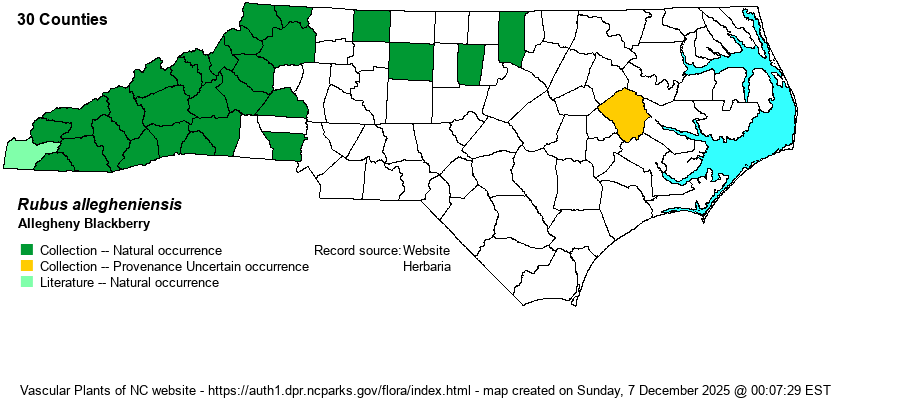| Author | Porter | |
| Distribution | Essentially throughout the Mountains and foothills, and scattered in the central and eastern Piedmont, mainly on monadnocks. Ranges east to Granville County. Records farther to the east are likely to be escapes or misidentifications. Owing to the difficulty in identifying this species from photos, the numerous reports in iNaturalist are not used on the range map.
This is, as expected, a more northerly species, ranging from Canada south throughout PA, and in the mountains to northern GA and AL. It ranges west to the eastern edge of the Great Plains. | |
| Abundance | Common to locally abundant at mid- to high elevations, less numerous but common in low elevations in the Mountains; rare to uncommon in the western Piedmont, and very rare in the eastern Piedmont, where presumably overlooked as the abundant R. pensilvanicus. | |
| Habitat | It is found on grass balds, in thickets, clearings, and along woodland borders; it also occurs inside forests, though mostly in openings. | |
| Phenology | Blooms in May and June, and fruits in July. | |
| Identification | This deciduous blackberry has long and arching stems, like many others in the genus; it reaches about 3-6 feet tall. It has three or five leaflets, as do most blackberries. It has strong, thick, straight prickles, and black “berries”, which are better termed as drupes. It has strongly glandular (sticky to the touch) flowering pedicels, and often similar hairs on some of the stems. The very common and widespread R. pensilvanicus (until recently named as R. argutus) also has strong and similar prickles, but it does not have glandular hairs on the ”canes” (stems) and usually not on the pedicels either. Smooth Blackberry (R. canadensis), another common montane blackberry, only rarely has prickles on the canes. | |
| Taxonomic Comments | The species had a few varieties listed for it well into the 20th Century, but nearly all recent references do not name varieties for it.
| |
| Other Common Name(s) | Common Blackberry | |
| State Rank | S5 | |
| Global Rank | G5 | |
| State Status | | |
| US Status | | |
| USACE-agcp | UPL link |
| USACE-emp | FACU link |

